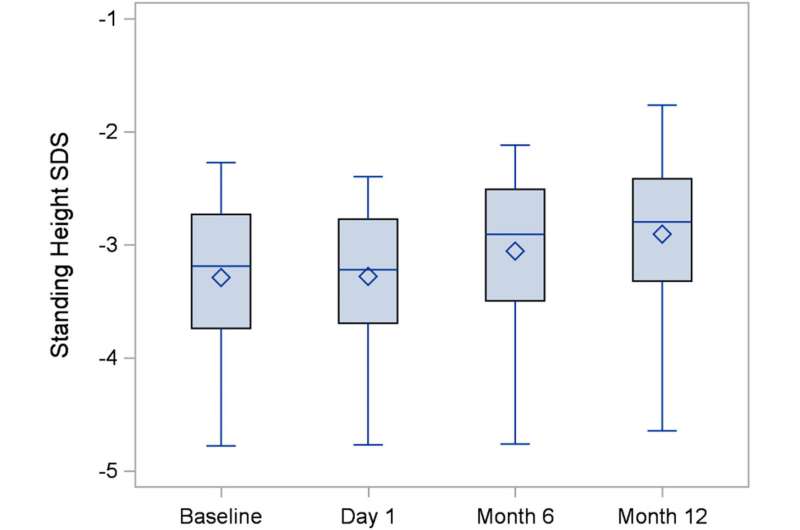This article has been reviewed according to Science X's editorial process and policies. Editors have highlighted the following attributes while ensuring the content's credibility:
fact-checked
peer-reviewed publication
trusted source
proofread
First clinical trial of vosoritide for children with hypochondroplasia shows increased growth

Vosoritide's first global Phase II study showed an average increased growth rate of 1.8 cm per year in children with hypochondroplasia, a genetic cause of short stature in children, according to researchers from Children's National Hospital.
"This is the first medicine that has been developed to specifically target the pathway involved in hypochondroplasia," says Andrew Dauber, M.D., chief of Endocrinology at Children's National. "These findings will help inform future studies of vosoritide for addressing growth disorders."
This clinical trial is the first-of-its-kind to treat children with genetic short stature who do not have achondroplasia.
The team found the annualized growth velocity increased by 2.26 standard deviation (SD) and the height standard deviation score (SDS) increased by 0.36 SD during the treatment period versus the observation period. Hypochondroplasia specific height SDS increased by 0.38 SD, according to the trial published in eClinicalMedicine.
The authors studied 24 children with hypochondroplasia. Half were female and 22 out of 24 had the p.Asn540Lys variant in the fibroblast growth factor receptor 3 (FGFR3) gene. The mean age was 5.86 years old, and the baseline height was between -4.78 SD to -2.27 SD. The trial consisted of a 6-month observation period to establish a baseline annualized growth velocity followed by a 12-month intervention period during which vosoritide was administered daily via subcutaneous injection at a dose of 15 micrograms/kg/day.
The researchers found the absolute annualized growth velocity increased from a mean of 5.12 +/- 1.36 cm/year during the observation period to 6.93 +/- 0.93 cm/year during the intervention period for a mean difference of 1.81 cm/year for children with this condition. During the trial, the researchers also noted there were no treatment-related serious adverse events and no one discontinued therapy.
The study findings also showed standing height SDS increased by 0.37 SD during the year of treatment or 0.41 SD using hypochondroplasia specific growth charts.
Other growth-related conditions included in this Phase II trial were Noonan syndrome, Neurofibromatosis type 1, Costello syndrome, NPR2 mutations and Aggrecan mutations. This manuscript includes only information specific to hypochondroplasia. Full data for all conditions studied in the trial will be available at a later date.
"Patients have come from all over the world to be part of our trial," Dr. Dauber says. "We're excited to see how well tolerated the medication was and how some patients had excellent responses."
More information: Andrew Dauber et al, Vosoritide treatment for children with hypochondroplasia: a phase 2 trial, eClinicalMedicine (2024). DOI: 10.1016/j.eclinm.2024.102591

















